How Does Your Business Compare to the Latest NFIB Small Business Optimism Index?

Recently, the May NFIB Small Business Optimism Index results came out. While they were certainly not surprising, if you’re feeling concerned about your business, you’re not alone. Seeing what others are struggling with (and what they’re doing in the face of these struggles) can be helpful.
This article gives you the highlights of the Index results for May.
NFIB Small Business Optimism Index May Result Highlights
- The NFIB Small Business Optimism Index increased by 0.4 points in May, reaching 89.4, but it has remained below the 49-year average of 98 for the past 17 months.
- Small business owners’ expectations of better business conditions in the next six months declined by one point to a net negative 50%.
- Supply chain disruptions and labor shortages are ongoing concerns for small businesses, although their impact is less severe compared to last year.
- Job openings that are hard to fill decreased by one point to 44%, a historic high.
- The net percentage of owners raising average selling prices decreased by one point to a net 32%, indicating a downward trend but still at an inflationary level.
- The net percentage of owners expecting higher real sales deteriorated by two points to a net negative 21%.
- A net 19% of owners plan to create new jobs in the next three months, while 63% reported hiring or trying to hire in May, with 89% struggling to find qualified applicants.
- Capital expenditures are a concern, with 57% of owners reporting capital outlays in the last six months and 25% planning capital outlays soon.
- Small businesses face challenges with inventory management, as a net negative 3% of owners considered their current inventory stocks as “too low.”
- Labor costs and quality are top concerns, with 41% of owners reporting raising compensation and 24% citing labor quality as their top business problem.
- Only 1% of owners reported unsatisfied borrowing needs. Financing ranked as the top business problem for only 4% of owners.
Key Takeaways:
To be more competitive in hiring, many small businesses are increasing salaries.
Funding isn’t a large problem for 96% of small businesses polled.
Most businesses are still finding it difficult to hire.
Perhaps you’re viewing these results and feeling like this is stating the obvious. Workforce challenges are the main concern for most businesses. Unfortunately, it appears that raising salaries isn’t the panacea many assume it to be.
That’s why one of the most important objectives we have this year is workforce development. And we need your input.
What the Alameda Chamber & Economic Alliance Can Do for Your Business
The chamber:
- Advocates for pro-business legislation and changes in laws to help improve the hiring situation.
- Brings the community together to tackle workforce development issues to help ensure your future employees have the skillset you need to be competitive.
- Educates you on HR trends that are helping companies become employers of choice in Alameda.
These are all things the chamber does behind the scenes that most people don’t think about. Whether you are a member or not, we are advocating for a pro-business climate in Alameda and the Bay Area. But if you’re not a member, your specific needs aren’t being heard.
Contact us today. If you are a member, let us know your challenges. Ensure your voice is heard. If you aren’t a member, consider joining. The Alameda Chamber has many resources to help you and your employees navigate these difficult times. There is no reason you should be alone. Nor should you have to start at square one. The Alameda Chamber is ready to help with advocacy and education.
About the NFIB Small Business Optimism Index
The NFIB Small Business Optimism Index is a monthly economic indicator. It measures the sentiment and confidence levels of small business owners in the United States. It is published by the National Federation of Independent Business (NFIB). The index is based on surveys conducted among NFIB members. These members represent a diverse range of industries and regions across the country. The index provides insights into the current and future expectations of small business owners regarding various aspects of their businesses, including sales, hiring plans, capital expenditures, and overall economic conditions. It is considered a key indicator of the health and outlook of the small business sector, which plays a crucial role in the U.S. economy.
